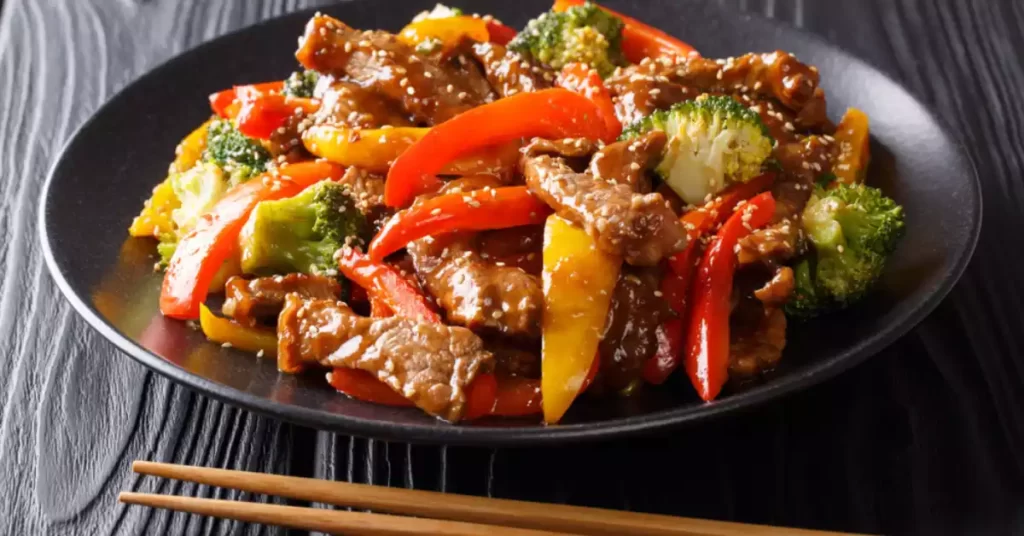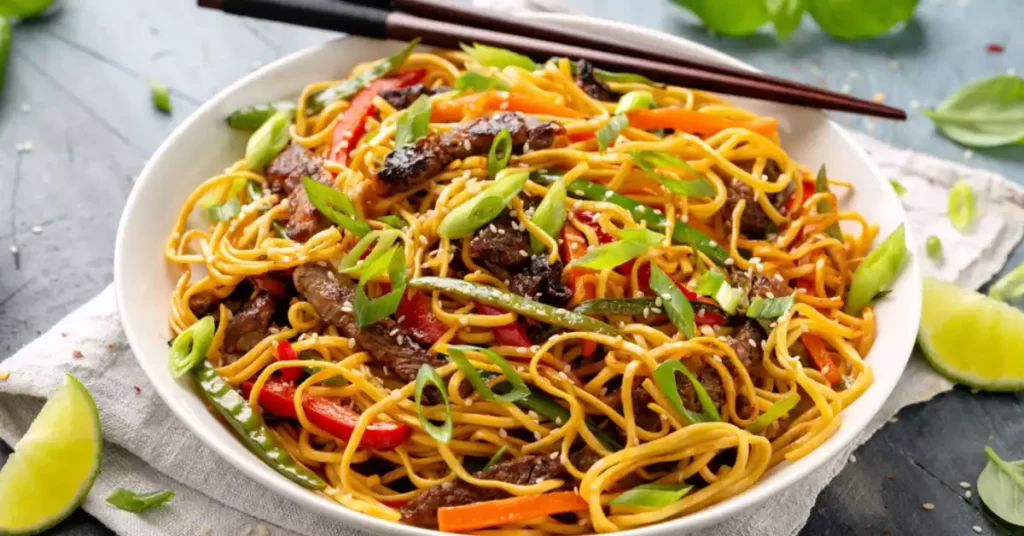Stir fry is a popular dish worldwide, known for its vibrant ingredients and incredible taste. It is a culinary tradition that dates back centuries, offering a brilliant amalgamation of textures, flavors, and health benefits. However, like any food, stir fry doesn’t last forever, especially when it comes to storing it in the fridge.
A typical stir fry lasts in the fridge for about 3-4 days. It’s vital to remember that the storage period may fluctuate based on the ingredients used, storage methods, and refrigerator conditions. Ensure that the stir fry is stored correctly to avoid compromising its taste and, most importantly, to prevent any foodborne illnesses.
Stir fry, when stored improperly, can turn from a delightful meal into a health hazard. Let’s explore the factors that contribute to stir fry’s shelf life, the signs of spoilage, and tips to prolong its freshness.
Storage Factors for Stir Fry
Immediate Storage After Cooking
As soon as the stir fry has cooled to room temperature, it’s crucial to refrigerate it within two hours. Leaving it out for longer can lead to bacterial growth, affecting the food’s quality and safety.
Container Selection for Storage
Always opt for airtight containers made from non-reactive materials like glass or high-quality plastic. Such containers prevent exposure to air, helping the stir fry maintain its freshness longer.
Correct Refrigeration Techniques
Refrigerate stir fry at temperatures below 40°F. Keeping the fridge clean and organized can also help maintain the stir fry’s quality.

Shelf Life of Stir Fry
Determining the Freshness of Stored Stir Fry
Assessing the freshness of your stir fry is relatively straightforward. If you notice any drastic changes in smell, texture, or color, it’s probably a sign that your stir fry has passed its prime. An off-odor, a slimy texture, or visible mold growth are clear indicators of spoilage.
Your senses are indeed the best tool to determine the freshness of stored food. However, remember that some types of foodborne bacteria can grow without changing the appearance or smell of the food. Always follow the “when in doubt, throw it out” rule.
Impact of Ingredients on Stir Fry Shelf Life
The types of ingredients used in your stir fry can significantly impact its shelf life. For example, a stir fry with fresh vegetables, chicken, or shrimp may have a shorter shelf life compared to one made with tofu or noodles, which are less perishable.
Ingredients such as garlic, onion, and bell peppers can last longer compared to leafy vegetables or certain types of meat. So, depending on the mix of ingredients you’ve used, your stir fry could last anywhere from 2 to 4 days in the fridge.
Impact of Sauce on Stir Fry Shelf Life
The sauce used in your stir fry can also affect its longevity. Sauces that have high acid content or salt, like soy sauce or fish sauce, act as natural preservatives and can extend the stir fry’s life.
Conversely, cream or tomato-based sauces may shorten the shelf life. Therefore, the choice of sauce could mean the difference between a stir fry that lasts for 2 days versus one that lasts for 4 days.
Effects of Improper Storage
Food Poisoning Risks from Stale Stir Fry
If stored improperly, a delightful stir fry can quickly turn into a food poisoning disaster. Bacteria like Salmonella, E.coli, or Listeria can grow in food left too long at room temperature or stored improperly in the refrigerator.
Consuming such food can lead to foodborne illnesses with symptoms ranging from mild (nausea, vomiting, or diarrhea) to severe (fever, abdominal cramping, or even life-threatening complications). Therefore, it’s paramount to store the stir fry properly and eat it within the recommended time frame.
Loss of Flavor and Texture Over Time
Beyond health risks, improperly stored stir fry can lose its flavor and texture over time. Vegetables may lose their crunch, meats might become tough, and the overall taste of the dish may become stale. The delightful experience of eating a fresh stir fry could be compromised if the storage isn’t done right.

Tips to Maximize Stir Fry Shelf Life
Best Practices for Storing Leftovers
To maximize the shelf life of your stir fry, there are certain practices you can follow. Refrigerating leftovers in smaller, shallow containers helps cool the stir fry faster and ensures even cooling. It’s also a good idea to separate components that may spoil faster and store them separately.
Freezing Stir Fry for Extended Shelf Life
If you’re looking to keep your stir fry edible for an extended period, freezing is an excellent option. Frozen stir fry can last for about two months. However, it’s essential to keep in mind that the texture of certain ingredients, especially vegetables, may change after freezing and thawing due to the breaking down of cellular structures.
Reheating Stored Stir Fry
Reheating Techniques for Best Flavor
When it comes to reheating your stored stir fry, doing so on a stove tends to preserve the dish’s texture and flavor better than microwaving. Always ensure to heat it to at least 165°F to kill any potential bacteria that might have grown during storage.
When to Avoid Reheating and Consuming
If the stir fry has been left out for over two hours at room temperature, shows signs of spoilage, or if it has been more than four days in the refrigerator, it’s better to avoid reheating and consuming it. These are signs that the food may no longer be safe to eat, and it’s best to err on the side of caution.

Frequently Asked Questions
Can I Freeze Stir Fry?
Yes, you can freeze stir fry for longer storage. However, keep in mind that freezing can affect the texture of certain ingredients. It’s best to consume frozen stir fry within two months for optimal quality.
How Can I Tell if My Stir Fry Has Gone Bad?
Stir fry that has gone bad typically exhibits changes in smell, color, and texture. If your stir fry smells off, has visible mold, or if the texture is slimy, it’s time to discard it.
What is the Best Way to Reheat Stir Fry?
The best way to reheat stir fry is on the stove. This method preserves the dish’s texture and flavor better than microwaving. Ensure to heat it to at least 165°F to kill any potential bacteria.
Conclusion
Ensuring the freshness and quality of stir fry involves understanding the factors that affect its shelf life, the signs of spoilage, and the best practices for storage. Adequate storage and prompt refrigeration are essential to maintain the dish’s flavor and prevent potential health risks.
Remember, the ingredients and sauce you choose can significantly impact your stir fry’s shelf life. By knowing this, you can make better decisions and enjoy your stir fry for a few days after preparation.
Ultimately, the key takeaway is to prioritize food safety when dealing with leftovers. Proper storage techniques, awareness of potential risks, and mindful consumption are all vital in enjoying your stir fry while protecting your health.
